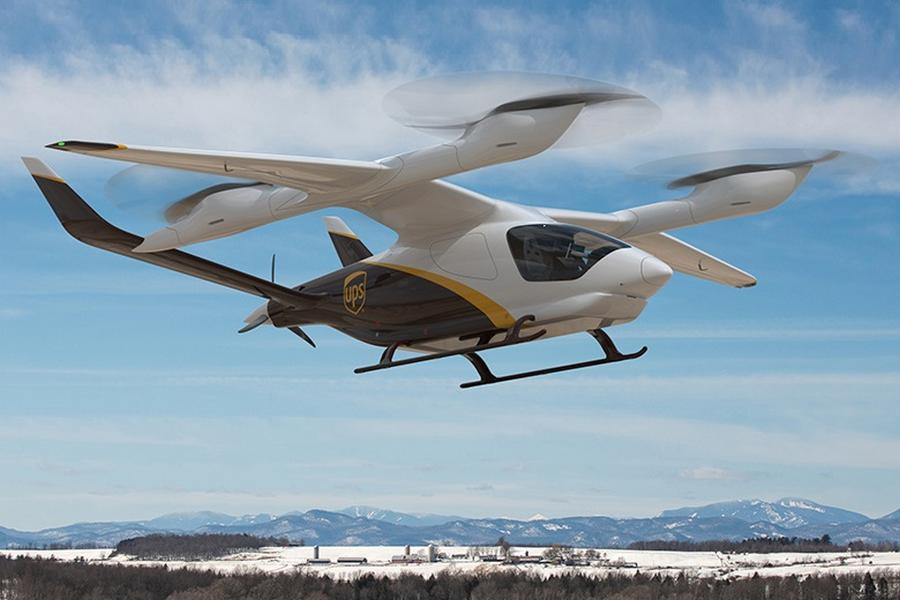There is a lot of interest in all-electric Urban Air Mobility eVTOL projects, but is that the kind of green innovation that aviation needs? And are they actually green, in themselves?
Air taxi concepts are impressive. People can relate to them because they look like aircraft – since most of them have a fixed-wing, or two. But imagining dozens of them flying through cities has captured many people’s imagination. And more importantly, it has attracted substantial investment, from many sources.

All of these initiatives involve all-electric vehicles. They will be quieter than city traffic and have low operating costs. And being all-electric means that eVTOL (electric Vertical Take-Off and Landing) vehicles will be green. Right? The answer isn’t quite as obvious as it seems. Because it really depends on what vehicles these eVTOLs are going to replace.
Sustainable Aero Lab has published a study on the matter. And beyond efficiency, they are also looking at how eVTOL and other high-profile green projects compare in terms of funding. They found that the biggest draws for funding are eVTOL Urban Air Mobility (UAM) projects, along with space tourism. There is also interest in sustainable supersonic aircraft, another idea that certainly qualifies as impressive.

Lacking Attention (and Funding)
But what this study found, is that projects like Sustainable Aviation Fuels (SAF) and/or hydrogen, attract much less funding. These and other green initiatives are far more relevant than eVTOL air taxis, as a means to decarbonize aviation. And yet more investors, including some high-profile names, are focusing on projects in the air taxi category.
But air taxis and other eVTOL vehicles are very energy-intensive, which makes the green tag somewhat questionable. Simply put, the battery capacity that these vehicles will use would take their passengers much further, in an electric car. And in practice, that’s what these air taxis will replace; not helicopters.

Beyond their green identity, some look at the energy-intensive nature of eVTOL projects with scepticism. At the moment, we still don’t have a practical fixed-wing GA aircraft with four seats. Two-seat trainers do exist and are very important for flight schools with many students doing pattern work. But until we see a four-seat version that can fly for an hour or more, some question the feasibility of a much more energy-intensive four-seat eVTOL!
Some future eVTOL users have stated that they will replace conventional aircraft with them, which makes them green. This applies to some vehicles in cargo roles, like UPS’ Beta eVTOL. But Sustainable Aero Lab makes the point that investors should turn their focus on things that will benefit aviation directly.

More Green Than eVTOL – Some Examples
We are already familiar with some of the areas that Sustainable Aero Lab thinks are more green than eVTOL projects. They include sustainable aviation fuels (SAF) and in the long term, hydrogen. Electric and hybrid-electric propulsion for conventional aircraft also needs investment. To be fair, this field is benefiting from eVTOL “green” funding to a certain extent.
But another field that Sustainable Aero Lab identifies is what they call “the Digital Backbone”. This includes seemingly small inefficiencies, that add up to a lot of waste. More efficient flight routing in busy airspace, which does away with holding patterns, could bring gains rivalling many technological innovations! The same could be true for things like electric taxiing.

Whether we like it or not, what is most important is often vastly different from what is most interesting. And again – green or not, eVTOL projects do involve at least some parallel development with more airline-relevant initiatives. But all-electric propulsion is practically impossible to scale beyond 20 seats (or much lower), for the foreseeable future.
Alas, people will put their money into whatever they think other people will find more interesting. This is the world of marketing. Alternatively, governments could fill any gaps in the funding of key projects. But arguably, that’s an even more delicate field than marketing!



